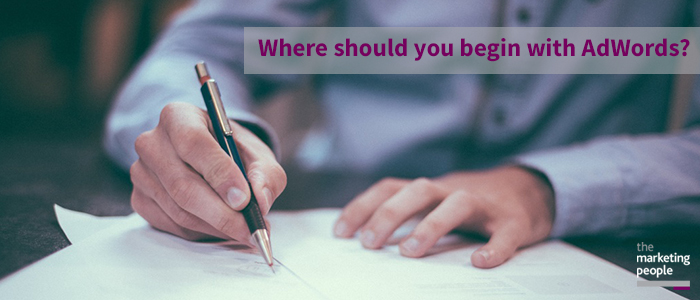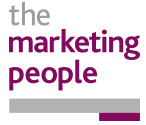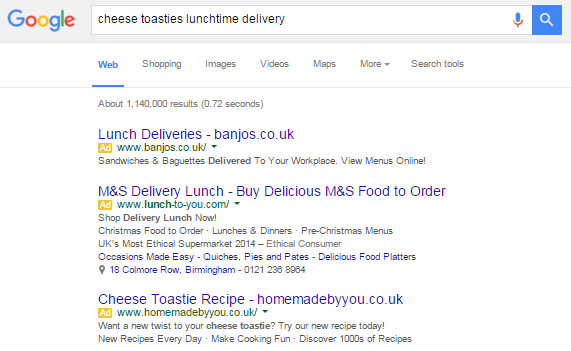
Google AdWords works because it is complex, and because every single part of your campaign is a variable. Which is what makes it work for so many companies, but what confuses a lot more. So we’ve put together some basic stages for you to follow. To get you started and keep you on track during your AdWords campaign.
As it can be hard to follow sometimes, I will be using the example of the ‘Cheese and things café’ to help you visualise what’s been explained. (Apologies to all of you reading this just before your lunch break!)
Before you begin – Define your purpose
Before you even open your google AdWords account, you need to define three things.
- What your main aim is to get out of a campaign (more sales/more exposure/more leads)
- How much time you are going to allow to manage this
- How much budget you are willing to put in to this
If you do not have a clear answer for each of these, it may not be the right time for you to be considering AdWords. Your aim will determine how you structure your campaign and your ads. Who they are targeted towards and what form of bidding you use.
If you haven’t given enough time to AdWords, you will find yourself with a lagging campaign. AdWords works because you have real time results, and can adapt your campaign to be more profitable constantly. This takes a lot of monitoring. So if you can only commit to the time it takes to set an account and your initial campaign up, maybe it’s time to consider an agency. Otherwise you will find yourself throwing a lot of money at a campaign that may not work.
Which leads us nicely to budget. You need to establish the budget of your campaign or campaigns. How much you are willing to go up to, to reach your goal. Some industries are more competitive than others, so you will have to spend more to appear in front of your potential customers at first. Ensure you have done some research so you have an idea of budget to start with. If your budget doesn’t stretch to getting you seen in your industry just yet, then perhaps continue working on your own marketing first, and revisit AdWords later.
So our little café is wanting to push the sales of their toasties for lunchtime delivery. They’re willing to spend £10 a day, which is around £300 a month. Bob who does their lunchtime delivery is going to spend some time after his deliveries has finished looking at their AdWords clicks for that day, and what worked, and making adjustments for tomorrows searches.
Put together your keywords
Keywords you will have heard over and over again when it comes to anything to do with being seen by the right potential customers on the internet.
For your ads, you want to look at 10-20 keywords that are quite specific to that advert. So for examples your aim is to get more toasties ordered through your website. You may look to do ads for ‘toasted sandwiches’ ‘cheese toasties’ ‘lunch delivery’ with each having 10 keywords specific to that advert. All of them will take the user back to your toasties landing page, but you can see which approach works best.
Google’s keyword planner is a great tool for getting an idea of your keywords. It will give you similar suggestions, estimated searches, estimated bid, and an idea of competition. This will not be 100% accurate, so don’t take this as certain. As mentioned, a lot of factors will make up your bid, so prices will change. Certain trends or topics may change search patterns, and new businesses are always starting, so competition will constantly change. But this tool is the closest information you will get without actually running the campaign.
Create or update your landing page
Before you set up your campaign, you will need somewhere for all those lovely new visitors to land. So take time to either improve your current web pages, or create a unique landing page where potential customers will be lead to.
This landing page will need to be relevant. The more relevant, the more google will like your ad. As you are giving your customers a good experience. So let’s take our cheese toastie example. If someone has searched for a ham and cheese toastie delivery, and clicked on to your ad, they would not expect to land on a page about your jacket potatoes. They would expect to come through to a page on various cheese toastie options that are available for delivery.
Ensure your landing page is easy to use. So it has enough information about the topic, there is a clear call to action (‘order here’ ‘call now to order’ etc) and where possible no obvious links to the rest of your site. As you want these potential customers to convert, you don’t want them to go wondering off until after they’ve placed an order.
Set up your account and get organised
Get started on your AdWords account. Set it up and get acquainted with the page, as you will be spending a lot of time here.
Having a structured account is key to keeping organised on AdWords. Once again, google have a best practise for this to keep you on track. It is suggested that you follow the layout of your website, possibly like this:
| Account | Cheese and Things Café | ||||||||
| Campaigns | Toasties | Jacket potatoes | Sandwiches | ||||||
| Adverts | Cheese toasties | toasted sandwiches | lunch delivery | Cheese and beans jacket potato | Jacket potato delivery | office lunch deliveries | Sandwich delivery | Cheese and pickle sandwiches | Lunch time sandwiches |
You will have your company as your account, your pages as your campaigns, and your offerings on those pages as adverts.
Though you may only run one campaign at first, having this style of layout means you can keep organised for future campaigns.
Create your ads
It is worth doing your research here. Search some of your keywords and see what ads are making it onto the first page. What draws you in, what extra information are they including? How does your company differ? This is where you can really set yourself aside from your competition, so take the time to see what they are saying.
So let’s take a look at what comes up for cheese toastie delivery
Once you have an idea of what’s out there, and what you want to say, you need to make sure you match AdWords best practise for ads. Especially when it comes to character limits. You only have 25 characters for your headline, and 35 characters each for your 2 description lines.
Assign the keywords you picked earlier to the relevant ad, and enter a general bid. From this you will be able to see an estimate of how many clicks you could expect for your daily budget. If you are happy with it, then set your ad live. You are now live.
Track your performance
AdWords is thorough. Very thorough. You can track every part of your campaign to see when people clicked through and why. So you can identify the times and places you are most successful, and replicate that in future campaigns.
So for example, Bob could find that on Thursdays and Friday their clicks go up by 30%. So he can use that information when it comes to adjustments, and spending the budget more wisely.
You can also link your AdWords and analytics accounts to get even more data, which may seem a little much at first, but as you get more experienced, it will help you to really take apart your campaign and see what works and why.
Adjust when necessary
There are so many different ways you can adjust your ads, so keep experimenting until you find which brings you return on your investment.
Adjusting is necessary to make your campaign successful. So even if they are only small changes, make them. If a keyword is performing well, put some more money on the bid to get it shown more times. If a keyword isn’t performing well, scrap it and stop wasting money. If you want to try adjusting your bids, but don’t want to commit just yet, then try experiments. Which will apply your changes to a small portion of your ads, so you can see if it works well or not before fully committing.
So Bob, who now knows they get more clicks on a Thursday and Friday, may show his ads only on those days. So there is more budget behind it, meaning more clicks-through’s.
You will want to keep making adjustments until your campaign becomes profitable. Then you can put more money behind it to make it more profitable.
And that is just the tip of the iceberg when it comes to AdWords. There are literally hundreds of resources to guide you through every part of your campaign, especially from Google themselves. So don’t stay stuck, take a look at what information is out there.
If you do find yourself really stuck when it comes to AdWords, or perhaps you just don’t have the time, let us take a look at it for you. Call us on 01543 495752 for more information on how we can get you more leads.

